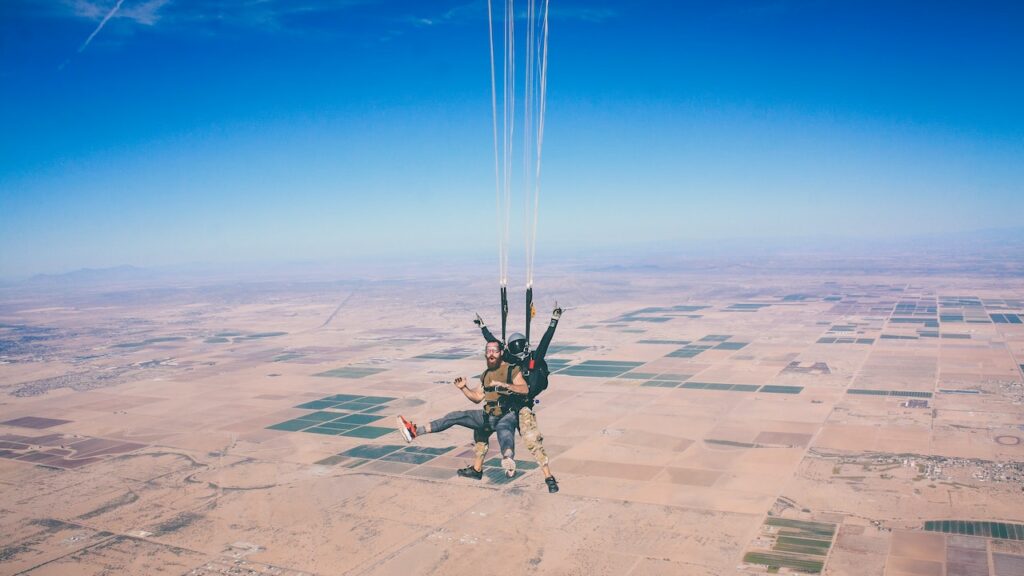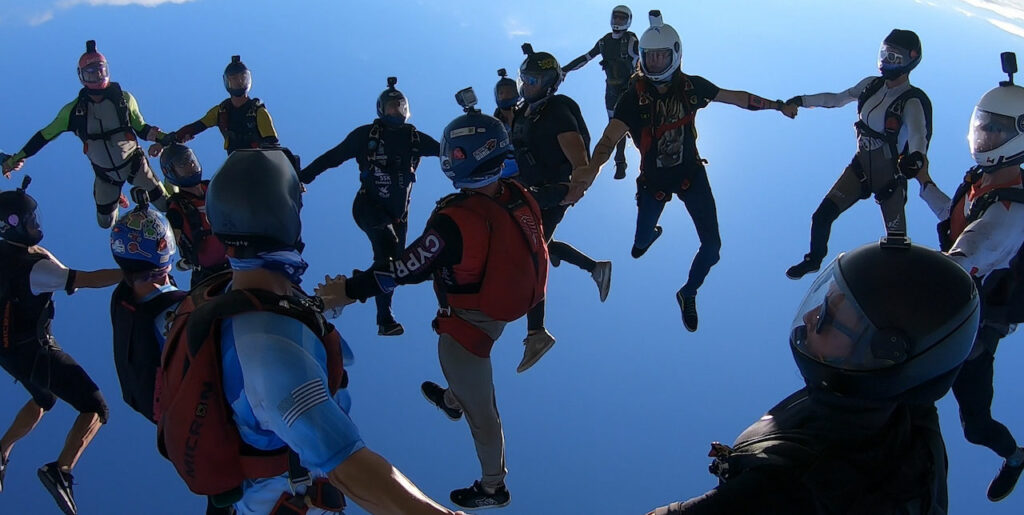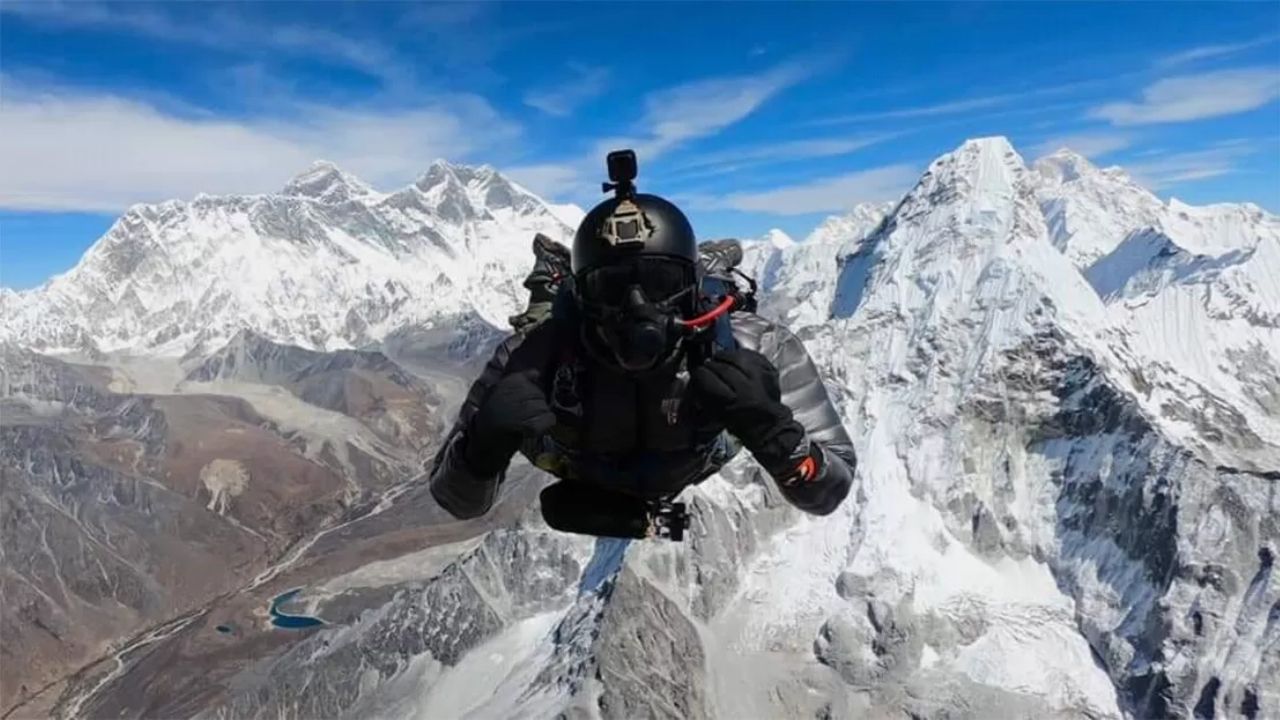Skydiving is the ultimate thrill ride. There’s nothing like throwing yourself off a plane and freefalling through the fresh air – it’s both exhilarating and terrifying. But if there’s one thing I’ve learned throughout my years of skydiving, it’s the real danger of overconfidence.
Just how dangerous? The truth is serious injuries are rare if you take precautions to minimize risk. Skydiving is one of the safest extreme sports based on the United States Parachuting Association’s (USPA) safety record.
Let’s go through several things that may go wrong during skydiving. While the chances of such mishaps are minimal, it is crucial to know the hazards before taking the plunge.
1. Equipment Failure
Skydiving gear is made with proper fail-safe. So, even if one part fails, the remaining components will continue to function. However, if multiple components fail, or if the failure is severe enough, you won’t be able to deploy the parachute safely.
There’s no need to panic just yet. With most estimates ranging from 1-2%, it is widely acknowledged that the rate of equipment failure in skydiving is quite low.
Should your parachute fail, however small the chances may be, you still have a reserve parachute to fall back on and land safely. The reserve parachute is your last line of defense and must be deployed properly.

This is why you must take utmost care of your primary and reserve parachutes. Get them tested by certified stores before diving. With all the excitement and anticipation, equipment failure might be the last thing on your mind. But you have to be cautious with your preparations.
The most common type of failure in parachutes is a rip in the fabric. Numerous factors, such as sharp items on the ground, improper stowage, or simple wear and tear, could be responsible for the tear in your parachute.
If you notice a rip in your parachute after deploying mid-air, the wisest choice is to hold on to it and descend as gently as possible.
Another issue might be a flawed deployment system. Complications with the packing, a broken release handle, or a tangled parachute could cause this. Though, it’s quite rare these days, given the strict safety regulations.
If you feel a malfunction while deploying your parachute, pull the reserve parachute handle on the right side of your body. It’s highly unlikely that both the primary and reserve parachute deployment mechanisms will fail simultaneously.
2. Bad weather
Weather can make or break your skydiving adventure in more ways than one: high winds, low clouds, rain, and lightning.
While it may be upsetting to postpone your jump because of bad weather, keep in mind that safety must always take priority—poor weather results in decreased visibility. Landing safely will be easier if you can see the ground.
Strong winds are another way in which nature may hold you back. It could make it more difficult to steer the parachute, lowering the probability of a safe landing. High winds are the primary cause of skydive cancelations in the United States.
Additionally, low clouds can greatly reduce visibility. And if you’re already planning to “tough it out.” Let me tell you that there are rules and regulations against the same, and the FAA isn’t particularly nice towards those who break their laws. The same laws make it illegal to jump through clouds.
Rain and lightning are both serious safety concerns. It’s advisable not to dive when either is in action. Heavy rains reduce visibility, and wet equipment is not pleasant to deal with.
Moreover, skydiving equipment often consists of electronic devices that might malfunction in case of lighting, and the consequences, combined with the bad weather, might be fatal.
Resolution: If your jump is canceled due to weather, remember that it’s for the best and enjoy the extra time on the ground.
3. Human Error
Our faults are the leading causes of skydiving accidents, accounting for about 60% of all accidents. Skydivers, like everyone else, make mistakes. The typical faults include poorly packing the parachute, jumping out of the plane at the wrong time, and not adhering to safety protocols.
Resolution: If something goes wrong while skydiving, staying calm and following the procedures you have been taught are best. Panicking only worsens the situation.

Packing too much or too little weight can also cause issues. The ideal weight for a skydiver is between 150 and 200 pounds. If the weight is too low, the parachute may not open properly. If the weight is too high, the parachute may open too quickly, causing the skydiver to spin out of control.
Neglecting weather conditions is another HUGE mistake that I just explained before. Make sure to check the wind speed and direction, as well as the temperature, beforehand.
Resolution: Every skydiver should have a reserve parachute on hand in case their primary parachute fails. They should also wear a jumpsuit to protect their body and a helmet to safeguard their head.
What’s the best way to prepare for a skydiving jump?
To have a safe and fun jump, it is important to be properly prepared. Here are some tips on preparing for a skydiving jump:
- Choose a reputable company that is experienced and has a good safety record.
- Listen to your instructor when he briefs you on everything you need to know before jumping. Follow them closely.
- Inspect your equipment and make sure everything is in good working condition.
- Make sure you are physically and mentally prepared for the experience.
- Relax and enjoy the experience.
1. What are some common mistakes people make while skydiving?
The most common mistake while skydiving is not following the proper safety procedures. Most of us need to take the time to learn about the safety procedures to assume that skydiving is safe.
Another common mistake we all make while skydiving is using the proper equipment. Using a skydiving harness that the National Safety Council approves is important.
Finally, you also need to listen to your instructors. The instructor is there to help keep you safe, so it’s pertinent that you listen to their instructions and follow their advice. If you have any questions, make sure to ask them before you jump.
2. Can you stop breathing while skydiving?
It’s common to experience breathing issues while skydiving. Some skydivers hold their breath during freefall though it’s not advisable as it may lead to you blackout. Instead, take long and steady breaths as you traverse the air.
3. What are the most common skydiving injuries?
Generally speaking, ankle sprains are the most common skydiving injuries that happen due to a faulty landing. It’s very common in tandem skydiving as beginners get anxious and fail to follow proper instructions. You must lift your leg when instructed.
Professional medical assistance is recommended in case of such injuries. The treatment and recovery period depends on the severity of the injury. While minor bruises heal within days or weeks, fractures take longer to recuperate from.

4. How to land safely if your parachute fails?
In case of a parachute failure, reach out for the cutaway handle to separate yourself from the canopy (main parachute) and immediately engage the reserve static line (RSL) to deploy the reserve parachute.
Maintain your stance, and don’t panic; if you do, you might end up veering away from the drop zone entirely. Once the reserve parachute is deployed, you must proceed like you would with the main parachute.
5. What should you do if your reserve parachute fails to open?
Try to reposition, get upright, and face the ground with your head arched upwards and arms spread out. This will help slow you down and execute a safer landing if your reserve parachute fails to open. It is critical to think clearly and act promptly in such a situation. Landing in water helps cushion your fall; try steering yourself towards a body of water to minimize the damage. While landing in water, you must streamline your body to minimize the impact.
Try to find a branch of a tree or a flagpole that you can grasp onto to slow down your descent. If everything else fails, as a last resort to reduce the chances of an injury, you must tuck your chin and knees into your chest as you prepare for impact. This will safeguard your head and spine.
All in all, avoiding boundary-pushing behavior and unnecessary risks is key to a safe and memorable experience. For first-time divers, the most important thing is to have fun! Remember, the USPA sets stringent safety standards and certification requirements for your instructor. All you gotta do is enjoy the ride!

